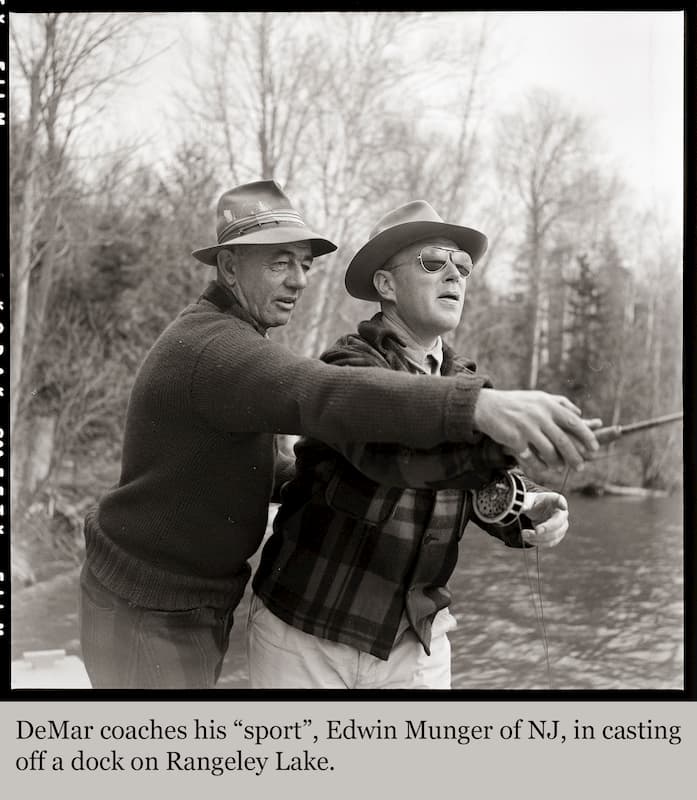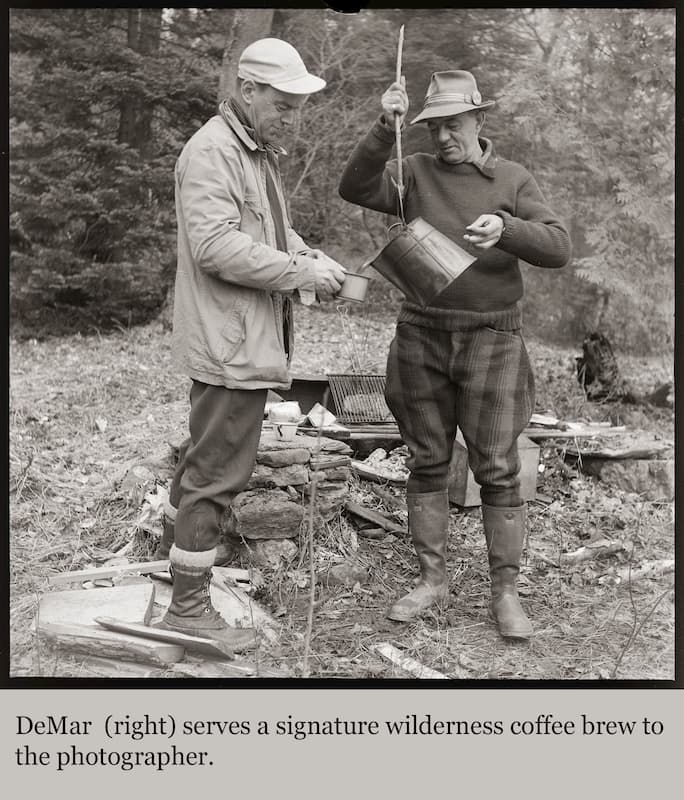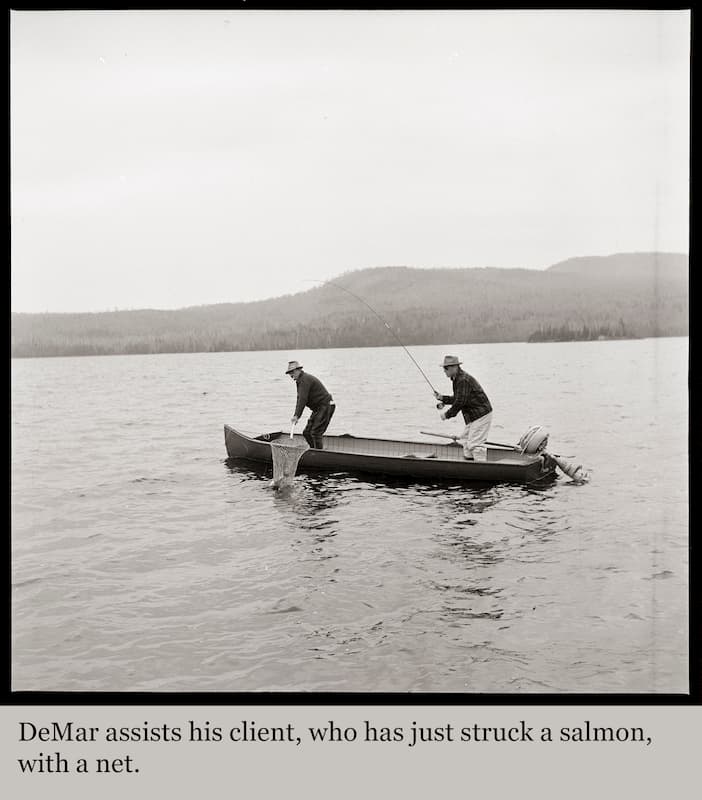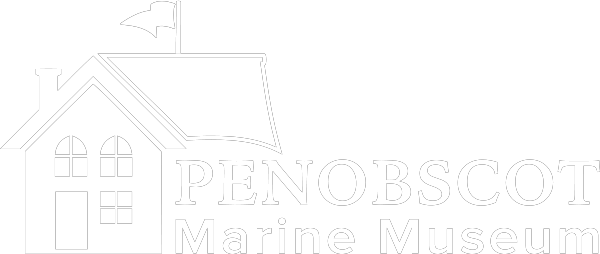
LB2017.19.41675
It’s November, and we’re in the later part of deer hunting season in Maine. Here’s a tip of the hat to those who hunt and fish. The sporting industry is vibrant in our state, and given the millions of acres of pristine ponds, lakes, and woods here, and the endless miles of rivers and streams, it was inevitable that people with expert knowledge of these environs would create an economic niche for themselves: the Maine Guides. While people have hired these services out for two hundred years or more, Maine didn’t formalize the practice until a piece of 1897 legislation began to require registration. The first registered Maine Guide was a woman: Cornilia Thurza Crosby, known colloquially as Fly Rod, was also an early popularizer of sporting in Maine. (Wikipedia, “Maine Guides”, n.d.)

LB2017.19.2560
When homegrown talent Kosti Ruohomaa, who exalted Maine folk life throughout his career as a photojournalist, visited Maine Guide Ed DeMar in 1958, DeMar was an elder statesman of the profession. A native of the Rangeley Lakes region, he was intimately familiar with the woods and waters there and a born steward of wild places. As expected, he knew where to find salmon and deer, was a wily storyteller, a friend to his fellow guides and clients but also to the wardens and state wildlife professionals who sustained the regulatory boundaries he operated within.

LB2017.19.2518
DeMar was a longtime officer in the Rangeley Lakes Guide Association, a sort of local workers’ union for old fashioned New England conservatives. The Association established pay ranges for guides and outlined standards for working conditions. At the time, they represented around 130 guides.

LB2017.19.2566
His propensity for the outdoors apparently dominated his character: in the off season, he sometimes signed on with logging companies and spent his winters at lumber camps in Maine’s north woods.

LB2017.19.2636
Guiding almost always selected for competence. Then as now, the job required not only expertise in the wilderness, but a strong moral backbone, a quick head, a radar for danger, confidence in one’s leadership, charisma, and an unflappable sense of humor.
Their excellence garnered benefits. Their clients, known in the trade as “sports”, customarily returned to the same guide year after year, cementing long and friendly connections. They often sent gifts to their guides from back at home. They tended to be successful professionals, who didn’t mind paying $150 a day to be shown to hunting and fishing grounds or to pay the equivalent of $180 per pound for fish they caught themselves.
To all who are hunting this season: keep safe, enjoy the woods, and have fun.

LB2017.19.2634

